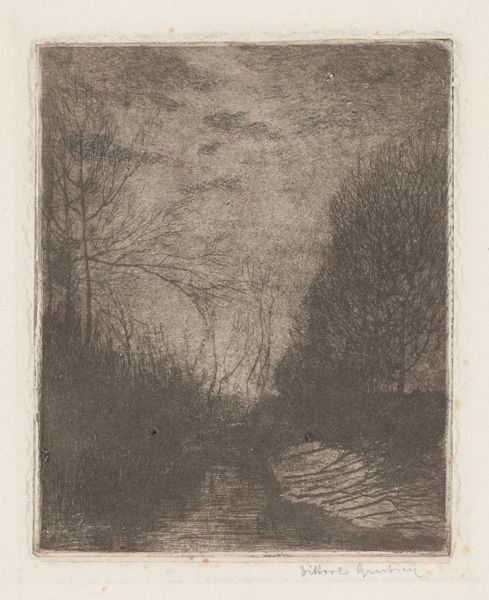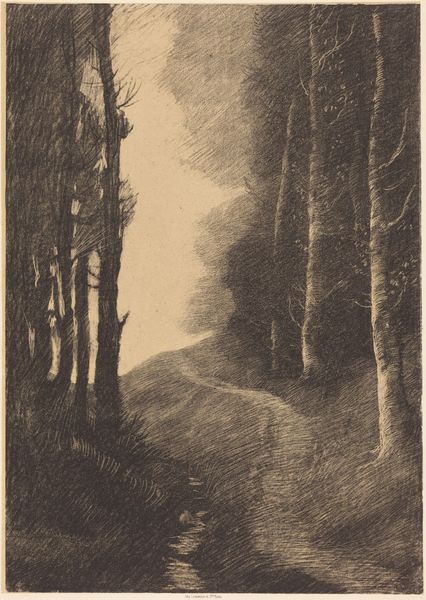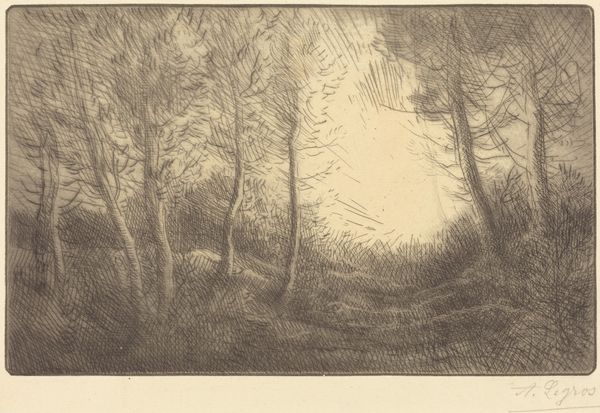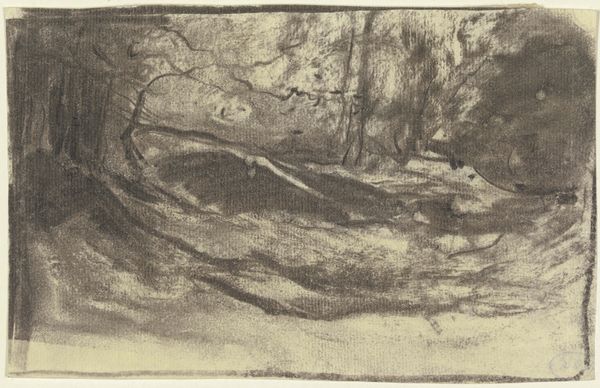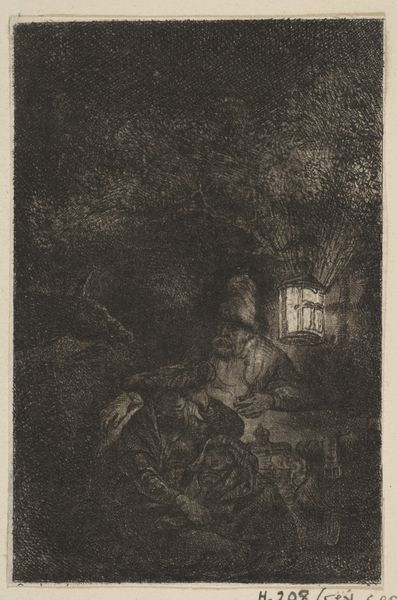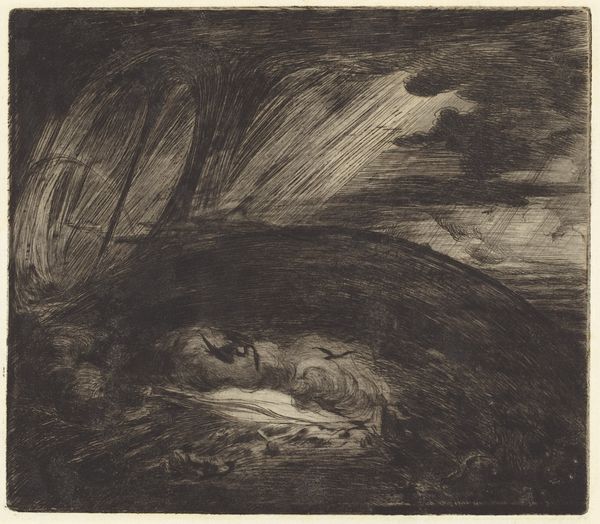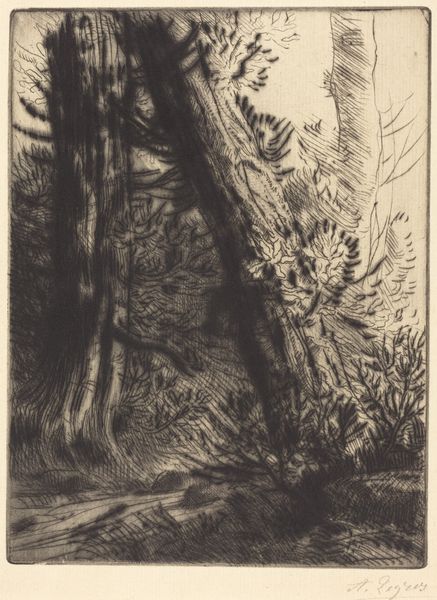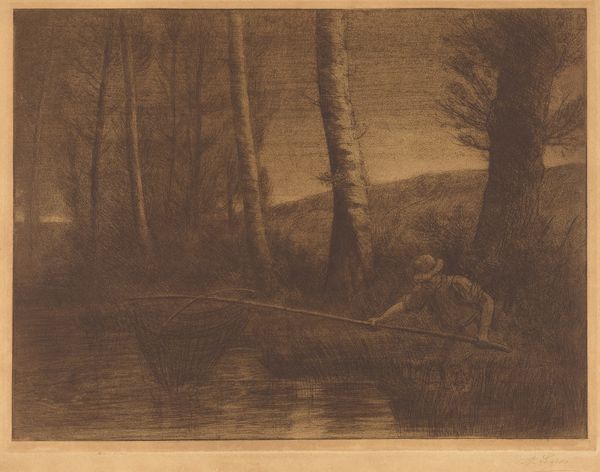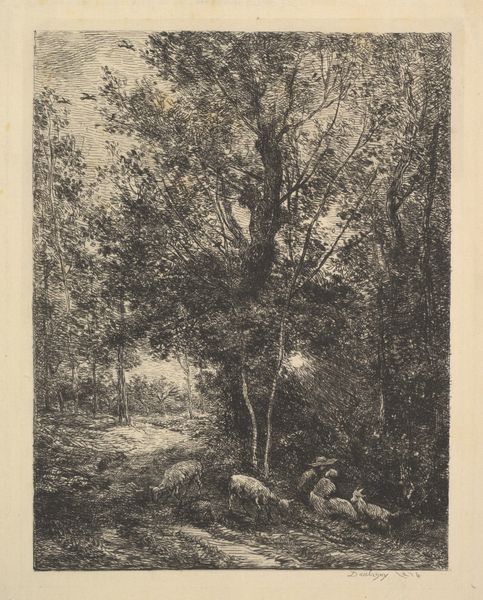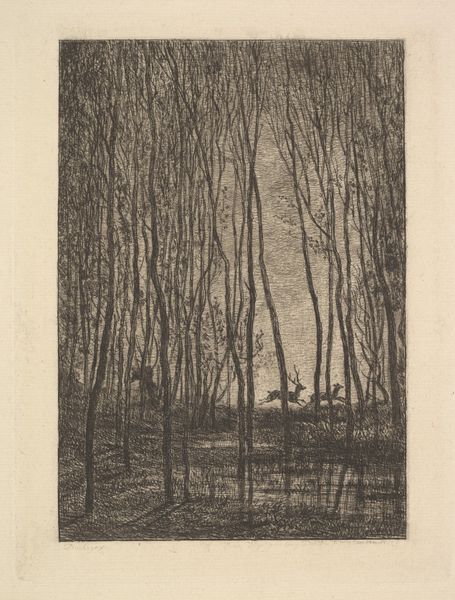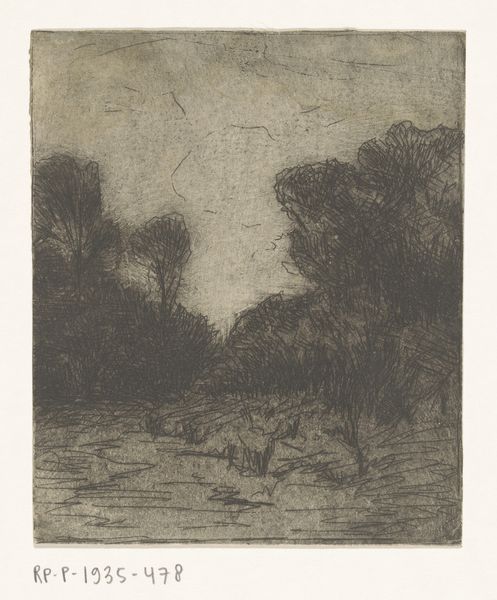
Copyright: Public Domain
Jean-François Millet made this drawing of charcoal on paper to create a nocturnal forest scene. It is an image that hints at something elemental and perhaps even revolutionary, even though the topic is not explicit. Made in France, sometime in the mid-19th century, this drawing belongs to the Barbizon School, a group of artists reacting against academic painting. They moved away from the grand historical and mythological themes and looked to the everyday reality of the French landscape, often including the rural peasantry. These artists were part of a broader cultural shift that questioned the status quo and celebrated the common person. By focusing on ordinary people and places, artists like Millet challenged the art world's established hierarchies and contributed to a more democratic vision of culture. Researching the history of art institutions and the changing social status of artists helps us understand the full meaning of works like this.
Comments
stadelmuseum about 2 years ago
⋮
The French artist Jean-François Millet drew this 'nocturne' in Barbizon in the second half of the 1850s. The artist had moved with his family from Paris to the little village on the edge of Fontainebleau forest in 1849; until his death, he would leave it only for the occasional journey. As part of the artists' colony at Barbizon, he studied the landscape of the region and created the pictures of peasant life which would soon make him famous as far away as the US East Coast. To get through to the 'Nocturnal Scene in a Forest', it seems as if the viewer's eyes must first gradually grow accustomed to the darkness. In the pallid light of a moon lying low in the sky and which falls between the dense, slender trunks of tall leafless trees, we can make out the outlines of a group of three people in a clearing in the foreground. They are clearly in the process of removing the clothing from an apparently lifeless body on the ground. The position of the body resembles that of the victim of a fight in an illustration by Millet dated 1851 for the novels of J. F. Cooper (Museum of Fine Arts, Budapest). Other than that, the drawing provides no clues which would clarify matters. This nocturnal activity remains a mystery, and the eerie atmosphere of the location is given extreme expressive power through the dense structure and masterly use of a nuanced scale of shades of black chalk.The scene acquires some meaning if one assumes that the drawing belonged to a project for the illustration of the fables of Jean de la Fontaine (1621-1695) - albeit it one that never came to fruition. Millet had embarked on this project together with Th. Rousseau, J. Dupré and N. Diaz from Barbizon and his artist friends A.-L. Barye and H. Daumier. The two fables assigned to Millet were 'La mort et le bûcheron' ('Death and the Woodcutter') and 'La fôret et le bûcheron' ('The Forest and the Woodcutter'), both of which bear a close relation to the puzzling scene seen here. A later drawing in the Louvre, which served as preparation for a painting by Millet showing the woodcutter's encounter with death (1858/59, Ny Carlsberg Glyptothek, Copenhagen), depicts a murder scene which does not reoccur in the painted composition but does refer back to the idea behind the drawing in the Städel. Among Millet's drawings in black chalk - which incorporate to great effect the white of the laid paper shining through from underneath as part of the design to light the scene - this work is a perfect example and one that heralds the fascinating quality of the later drawings of Georges Seurat.
Join the conversation
Join millions of artists and users on Artera today and experience the ultimate creative platform.

